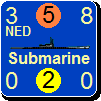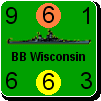tom730_slith
Posts: 169
Joined: 1/28/2014
Status: offline

|
quote:
ORIGINAL: warspite1
quote:
ORIGINAL: tom730
Truth is though, that without the "Arsenal of Democracy" churning out everything from tanks to planes to trucks to boots for the cause it is unlikely the USSR could have turned the tables as fast as they did. More likely without all the trucks they got from us they would have slowly bled the Nazis to death in a perpetual slugfest, still ultimately winning due to overwhelming numbers of men and industrial capacity. Just would ave taken longer and been even uglier. It would have meant bad news for ALL of Europe instead of just Eastern Europe!
warspite1
Re Lend-Lease to the USSR, the British helped too! - The below is an article by historian Alexander Hill from HistoryNet
That the Soviet victories of late 1941 were won with Soviet blood and largely with Soviet weapons is beyond dispute. But for decades the official Soviet line went much further. Soviet authorities recognized that the “Great Patriotic War” gave the Communist Party a claim to legitimacy that went far beyond Marxism-Leninism or the 1917 Revolution, and took pains to portray their nation’s victories in World War II as single-handed. Any mention of the role that Western assistance played in the Soviet war effort was strictly off-limits.
During Nikita Khrushchev’s rule in the late 1950s and early 1960s, there was a window of greater frankness and openness about the extent of aid supplied from the West under the Lend-Lease Act—but it was still clearly forbidden for Soviet authors to suggest that such aid ever made any real difference on the battlefield. Mentions of Lend-Lease in memoirs were always accompanied by disparagement of the quality of the weapons supplied, with American and British tanks and planes invariably portrayed as vastly inferior to comparable Soviet models.
An oft-quoted statement by First Vice-Chairman of the Council of People’s Commissars Nikolai Voznesensky summed up the standard line that Allied aid represented “only 4 percent” of Soviet production for the entire war. Lacking any detailed information to the contrary, Western authors generally agreed that even if Lend-Lease was important from 1943 on, as quantities of aid dramatically increased, the aid was far too little and late to make a difference in the decisive battles of 1941–1942.
But since the collapse of the Soviet Union, a trickle of information has emerged from archives in Moscow, shedding new light on the subject. While much of the documentary evidence remains classified “secret” in the Central Archives of the Ministry of Defense and the Russian State Archive of the Economy, Western and Russian researchers have been able to gain access to important, previously unavailable firsthand documents. I was recently able to examine Russian-language materials of the State Defense Committee—the Soviet equivalent of the British War Cabinet—held in the former Central Party Archive. Together with other recently published sources, including the wartime diaries of N. I. Biriukov, a Red Army officer responsible from August 1941 on for the distribution of recently acquired tanks to the front lines, this newly available evidence paints a very different picture from the received wisdom. In particular, it shows that British Lend-Lease assistance to the Soviet Union in late 1941 and early 1942 played a far more significant part in the defense of Moscow and the revival of Soviet fortunes in late 1941 than has been acknowledged.
Particularly important for the Soviets in late 1941 were British-supplied tanks and aircraft. American contributions of the time were far fewer. In fact, for a brief period during December 1941, the relative importance of British aid increased well beyond levels planned by the Allies as a result of American reaction to the outbreak of war with Japan; some American equipment destined for the Soviet Union was actually unloaded from merchant vessels and provided to American forces instead.
Even aid that might seem like a drop in the bucket in the larger context of Soviet production for the war played a crucial role in filling gaps at important moments during this period. At a time when Soviet industry was in disarray—many of their industrial plants were destroyed or captured by the advancing Nazi troops or in the process of evacuation east—battlefield losses of specific equipment approached or even exceeded the rate at which Soviet domestic production could replace them during this crucial period. Under these circumstances even small quantities of aid took on far greater significance.
According to research by a team of Soviet historians, the Soviet Union lost a staggering 20,500 tanks from June 22 to December 31, 1941. At the end of November 1941, only 670 Soviet tanks were available to defend Moscow—that is, in the recently formed Kalinin, Western, and Southwestern Fronts. Only 205 of these tanks were heavy or medium types, and most of their strength was concentrated in the Western Front, with the Kalinin Front having only two tank battalions (67 tanks) and the Southwestern Front two tank brigades (30 tanks).
Given the disruption to Soviet production and Red Army losses, the Soviet Union was understandably eager to put British armor into action as soon as possible. According to Biriukov’s service diary, the first 20 British tanks arrived at the Soviet tank training school in Kazan on October 28, 1941, at which point a further 120 tanks were unloaded at the port of Archangel in northern Russia. Courses on the British tanks for Soviet crews started during November as the first tanks, with British assistance, were being assembled from their in-transit states and undergoing testing by Soviet specialists.
The tanks reached the front lines with extraordinary speed. Extrapolating from available statistics, researchers estimate that British-supplied tanks made up 30 to 40 percent of the entire heavy and medium tank strength of Soviet forces before Moscow at the beginning of December 1941, and certainly made up a significant proportion of tanks available as reinforcements at this critical point in the fighting. By the end of 1941 Britain had delivered 466 tanks out of the 750 promised.
The British Military Mission to Moscow noted that by December 9, about ninety British tanks had already been in action with Soviet forces. The first of these units to have seen action seems to have been the 138th Independent Tank Battalion (with twenty-one British tanks), which was involved in stemming the advance of German units in the region of the Volga Reservoir to the north of Moscow in late November. In fact the British intercepted German communications indicating that German forces had first come in contact with British tanks on the Eastern front on November 26, 1941.
The exploits of the British-equipped 136th Independent Tank Battalion are perhaps the most widely noted in the archives. It was part of a scratch operational group of the Western Front consisting of the 18th Rifle Brigade, two ski battalions, the 5th and 20th Tank Brigades, and the 140th Independent Tank Battalion. The 136th Independent Tank Battalion was combined with the latter to produce a tank group of only twenty-one tanks, which was to operate with the two ski battalions against German forces advancing to the west of Moscow in early December. Other largely British-equipped tank units in action with the Western Front from early December were the 131st Independent Tank Brigade, which fought to the east of Tula, south of Moscow, and 146th Tank Brigade, in the region of Kriukovo to the immediate west of the Soviet capital.
While the Matilda Mk II and Valentine tanks supplied by the British were certainly inferior to the Soviets’ homegrown T-34 and KV-1, it is important to note that Soviet production of the T-34 (and to a lesser extent the KV series), was only just getting seriously underway in 1942, and Soviet production was well below plan targets. And though rapid increases in tank firepower would soon render the 40mm two-pounder main gun of the Matilda and Valentine suitable for use on light tanks only, the armor protection of these British models put them firmly in the heavy and medium categories, respectively. Both were superior to all but the Soviet KV-1 and T-34 in armor, and indeed even their much maligned winter cross-country performance was comparable to most Soviet tanks excluding the KV-1 and T-34.
A steady stream of British-made tanks continued to flow into the Red Army through the spring and summer of 1942. Canada would eventually produce 1,420 Valentines, almost exclusively for delivery to the Soviet Union. By July 1942 the Red Army had 13,500 tanks in service, with more than 16 percent of those imported, and more than half of those British.
Lend-Lease aircraft deliveries were also of significance during the Battle of Moscow. While Soviet pilots praised the maneuverability of the homegrown I-153 Chaika and I-16 Ishak fighters—still in use in significant numbers in late 1941—both types were certainly obsolete and inferior in almost all regards to the British-supplied Hurricane. The Hurricane was rugged and tried and tested, and as useful at that point as many potentially superior Soviet designs such as the LaGG-3 and MiG-3. There were apparently only 263 LaGG-3s in the Soviet inventory by the time of the Moscow counteroffensive, and it was an aircraft with numerous defects. At the end of 1941 there were greater numbers of the MiG-3, but the plane was considered difficult to fly. The Yak-1, arguably the best of the batch, and superior in most regards to the Hurricane, suffered from airframe and engine defects in early war production aircraft.
A total of 699 Lend-Lease aircraft had been delivered to Archangel by the time the Arctic convoys switched to Murmansk in December 1941. Of these, 99 Hurricanes and 39 Tomahawks were in service with the Soviet air defense forces on January 1, 1942, out of a total of 1,470 fighters. About 15 percent of the aircraft of the 6th Fighter Air Corps defending Moscow were Tomahawks or Hurricanes.
The Soviet Northern Fleet was also a major and early recipient of British Hurricanes, receiving those flown by No. 151 Wing of the RAF, which operated briefly from Soviet airfields near Murmansk. As early as October 12, 1941, the Soviet 126th Fighter Air Regiment was operating with Tomahawks bought from the United States by Britain. Tomahawks also served in defense of the Doroga Zhizni or “Road of Life” across the ice of Lake Ladoga, which provided the only supply line to the besieged city of Leningrad during the winter of 1941–42. By spring and summer of 1942 the Hurricane had clearly become the principal fighter aircraft of the Northern Fleet’s air regiments; in all, 83 out of its 109 fighters were of foreign origin.
British and Commonwealth deliveries to the Soviet Union in late 1941 and early 1942 would not only assist in the Soviet defense of Moscow and subsequent counteroffensive, but also in increasing Soviet production for the next period of the war. Substantial quantities of machine tools and raw materials, such as aluminum and rubber, were supplied to help Soviet industry back on its feet: 312 metal-cutting machine tools were delivered by convoy PQ-12 alone, arriving in March 1942, along with a range of other items for Soviet factories such as machine presses and compressors.
Once again, raw figures do not tell the whole story. Although British shipments amounted to only a few percent of Soviet domestic production of machine tools, the Soviet Union could request specific items which it may not have been able to produce for itself. Additionally, many of the British tools arrived in early 1942, when Soviet tool production was still very low, resulting in a disproportionate impact. The handing over of forty imported machine tools to Aviation Factory No. 150 in July 1942, for example, was the critical factor in enabling the factory to reach projected capacity within two months.
Lend-Lease aid did not “save” the Soviet Union from defeat during the Battle of Moscow. But the speed at which Britain in particular was willing and able to provide aid to the Soviet Union, and at which the Soviet Union was able to put foreign equipment into frontline use, is still an underappreciated part of this story. During the bitter fighting of the winter of 1941–1942, British aid made a crucial difference.
Churchill was so pleased with Hitler's crazy attempt at subduing the USSR that he was understandably more than willing to give aid to Stalin, even though GB was in a very shaky condition at the time. The earlier aid got there the better, and the crews of the arctic convoys were incredible brave! A real tribute to the maritime excellence of the Brits. I take nothing away from GB and the courage of the British people and armed forces in WW2!
But once the US was in it and geared up production, the tanks they sent helped Montgomery in North Africa and the trucks they sent to Russia - let alone all the other stuff - allowed the Russians to develop mobile tactics on a grand scale.
Re the Russians, Stalin was smart enough not to appeal to Marxist ideology and instead called for saving the Rodina! Millions of Russians answered the call and died for the motherland. It can't be forgotten though that hundreds of thousands of Ukrainians, Cossacks, and other non-Russians fought for Hitler given the chance. With the horrible treatment these people received from Moscow it is no wonder.
|
 Printable Version
Printable Version













 - and with the lyrics
- and with the lyrics 

 New Messages
New Messages No New Messages
No New Messages Hot Topic w/ New Messages
Hot Topic w/ New Messages Hot Topic w/o New Messages
Hot Topic w/o New Messages Locked w/ New Messages
Locked w/ New Messages Locked w/o New Messages
Locked w/o New Messages Post New Thread
Post New Thread